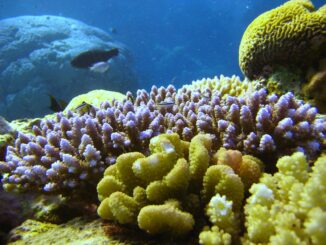
An ocean heat wave like nothing seen before hit the southwest Pacific in 2024, spawning the busiest cyclone season the region has seen in recorded history.
That’s the conclusion of a new report by the World Meteorological Organization, a United Nations specialized agency. WMO’s findings add to the abundance of irrefutable evidence that global warming is causing profound changes to climate and weather patterns.
WMO scientists briefed members of the press on the report’s conclusions. Seven WMO members contributed data and compiled the report with help of 16 experts across an array of relevant fields of study.
“The 2024 tropical cyclone season was unprecedented,” said Ben Churchill, director of WMO’s Asia and Southwest Pacific regional office. He pointed to the 12 cyclones that hit the Philippines in that single season.
The Philippines is no stranger to typhoons, but 2024 “was off the scale” even for that country, Churchill added.
WMO’s State of the Climate in the South-West Pacific 2024 report paints a troubling picture and warns of further threats to come.
It finds that the region’s ocean surface temperatures were the highest of any recorded that year. Marine heatwaves that spawned powerful cyclones and sparked coral bleaching events spread across 40 million square kilometers at the peak of the heating cycle. These changes affected land temperatures and weather conditions, as well.
WMO predicts that the last remaining glaciers in Indonesia’s Irian Jaya province melt away into oblivion within the next few years, likely by 2030.
By all measures, last year’s temperature spike in the region was unprecedented.
“This was the warmest year on record for the southwest Pacific,” said Thea Turkington, the lead author of the new report. Compared to the entire period of 1991 to 2020 “2024 was almost half a degree warmer,” she added.
The heat, she said, created abnormally wet conditions in some areas, drier conditions in others. “Parts of the region were quite wet, and some were quite dry.”
Conditions that Public Parks discovered in New Zealand in 2020 were repeated in that country in 2024.
During our visit, the North Island was suffering from an intense drought that led to strict restrictions on campfires and other outside burning. On the South Island, torrential rains washed out roads and restricted travelers’ access to some of New Zealand’s most popular coastal destinations.
Tongariro National Park was particularly parched, and New Zealand’s park service had posted warnings about the dry conditions and a ban on campfires.
Turkington said 2024 saw a repeat of those extremes between New Zealand’s two main islands.
Churchill said the fact that the Philippines was hit by a dozen typhoons in quick succession, many of them making landfall in the same areas, should be a wake-up call for everyone.
“This is a message for stronger climate action, not just in this region but globally,” he said.
Park Info
Park:
Tongariro National Park
Location:
New Zealand
More Information:
https://www.doc.govt.nz/parks-and-recreation/places-to-go/national-parks



